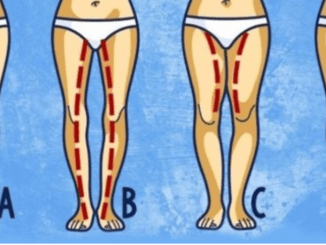When you think of airline pilots, their pristine uniforms and clean-shaven faces might come to mind. Ever wondered why many airlines don’t allow pilots to grow beards? It’s not just about maintaining a polished appearance—there’s a crucial safety reason behind this rule.
The Role of Oxygen Masks in Aviation Safety

To understand the no-beard rule, we first need to talk about the importance of oxygen masks in aviation. Pilots are responsible for the safety of everyone on board, and in emergencies, their ability to stay alert and take quick action is paramount. This is where oxygen masks come into play.
Oxygen masks are life-saving devices designed to supply pilots with breathable air in situations where cabin pressure drops or the air becomes unbreathable due to smoke or fire. These masks create a tight seal around the face, ensuring that oxygen is delivered efficiently. In a high-stakes scenario at 35,000 feet, even a small compromise in oxygen supply can have catastrophic consequences.
Why Beards Are a Problem for Oxygen Masks
Here’s where facial hair becomes an issue: Beards can prevent oxygen masks from forming a proper seal around the face. These masks are designed to fit snugly against the skin, but when facial hair is in the way, air can leak out. This leakage reduces the effectiveness of the mask, compromising the pilot’s ability to receive the oxygen they need to remain conscious and alert.
Think of it like trying to seal a Ziploc bag that has crumbs caught in the zipper—it just doesn’t work as intended. For pilots, this seemingly small issue can have life-or-death implications. If a pilot can’t get enough oxygen in an emergency, their decision-making abilities and reaction times can be severely impaired.
Regulations and Standards for Oxygen Masks
Aviation authorities around the world, including the Federal Aviation Administration (FAA) and the European Union Aviation Safety Agency (EASA), have strict regulations regarding oxygen masks. These devices are rigorously tested to ensure they function perfectly in high-pressure scenarios, but the tests assume that the wearer has minimal facial obstructions—like a clean-shaven face.
Airlines enforce the no-beard rule to comply with these safety standards. It’s not about being overly strict; it’s about ensuring that pilots can use their safety equipment as intended. After all, when hundreds of lives are in your hands, there’s no room for error.
What About Other Facial Hair?
You might be wondering, “What about mustaches? Are those allowed?” The answer is yes—within reason. Mustaches that don’t interfere with the edges of the oxygen mask are generally acceptable. Since the mask forms a seal around the nose and mouth, a neatly trimmed mustache that doesn’t extend beyond the lip line usually isn’t an issue.
However, full beards, goatees, or sideburns that interfere with the mask’s sealing area are strictly off-limits. Airlines often provide specific grooming guidelines for their pilots to ensure there’s no ambiguity.
Historical Context: The Evolution of the No-Beard Rule

The no-beard rule isn’t a new concept—it’s been in place for decades. In the early days of commercial aviation, oxygen masks were less sophisticated and more prone to leaks. Over time, advancements in technology have made these devices more reliable, but the principle remains the same: an unobstructed seal is essential for safety.
Interestingly, the military has similar rules for fighter pilots and other personnel who rely on masks for breathing in high-altitude or hazardous environments. In these contexts, beards are also prohibited for the same reason—they interfere with the functionality of critical life-support equipment.
Cultural Considerations and Exceptions
In some cultures, beards hold significant religious or personal meaning. For example, Sikhism often encourages men to grow beards as a part of their faith. In such cases, airlines may face challenges in balancing cultural sensitivity with safety regulations.
Some individuals have attempted to use workaround solutions, like custom-fitted masks, but these are not widely adopted due to the rigorous testing and certification processes required in aviation. Ultimately, safety takes precedence, and pilots are expected to comply with the grooming standards set by their airline.
The Bigger Picture: Safety Over Style
While the no-beard rule might seem overly strict at first glance, it’s a reflection of the aviation industry’s commitment to safety. Every rule in aviation—from how pilots train to how equipment is maintained—is designed to minimize risks and ensure the safety of passengers and crew.
For pilots, the responsibility of safeguarding lives outweighs personal preferences. Shaving may feel like a small sacrifice, but it’s one that has a meaningful impact on their ability to perform under pressure.
Other Grooming Standards for Pilots

Beards aren’t the only aspect of grooming regulated for pilots. Airlines often have detailed policies regarding overall appearance, including:
- Uniform standards: Pilots must wear their uniforms neatly and professionally.
- Haircuts: Hair should be kept tidy and should not obstruct vision or headset functionality.
- Personal hygiene: Pilots are expected to maintain a clean and polished appearance, reinforcing passenger confidence in their professionalism.
These standards are part of the broader effort to maintain a professional image and ensure that pilots are prepared to handle their responsibilities without distractions.
Conclusion: The Practical Reason Behind the No-Beard Rule
At the end of the day, the rule prohibiting beards for pilots isn’t about aesthetics—it’s about safety. Oxygen masks are a critical piece of equipment in emergencies, and their effectiveness depends on forming a tight seal against the skin. Beards, no matter how stylish, can compromise that seal and put lives at risk.
By adhering to grooming standards, pilots demonstrate their commitment to the highest levels of safety and professionalism. So, the next time you see a clean-shaven pilot in the cockpit, remember—it’s not just a grooming choice; it’s a reflection of their dedication to protecting everyone on board.


